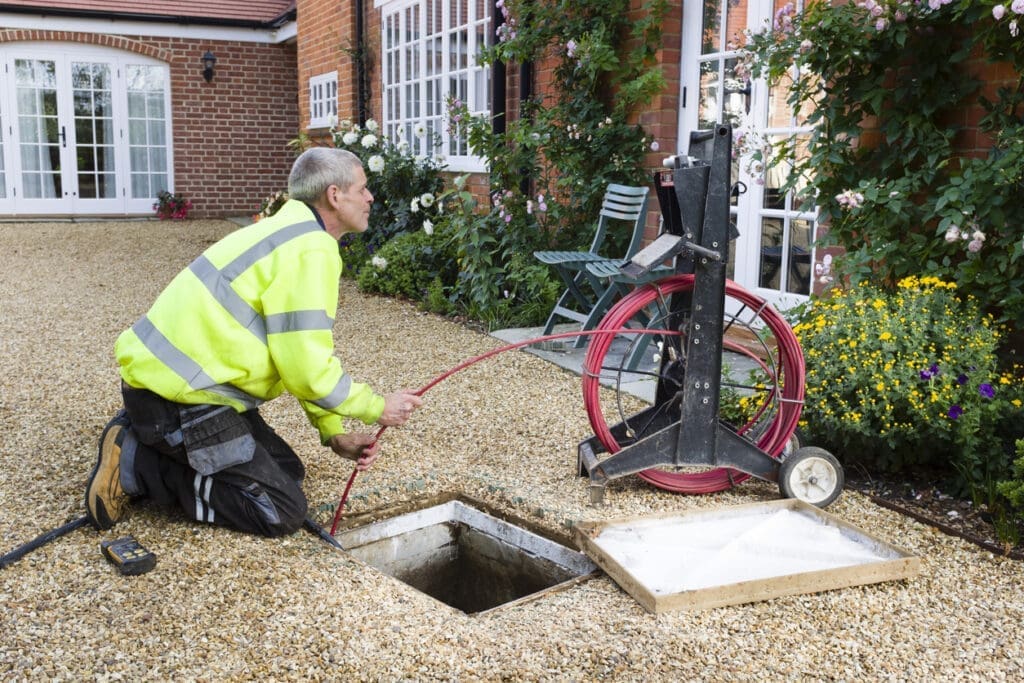
Owning and renting your own home and being able to decorate and care for it as you wish is one of the simplest joys in life. Unfortunately, this care also includes maintaining systems we’d forget about until they go wrong: sewage and plumbing. Caring for these everyday necessities gets put on the back-burner in favor of things like AC units, heating, gas, and water–but sewage and plumbing are necessary for not only your home’s toilet system but anything that has a drain or pipe: sinks, dishwashers, hoses, bathtubs, showers, and more. So how can you care for and maintain this critical system and prevent a backed-up sewer? Keep reading below to discover Goodbee’s top tips to avoid a backed-up sewer and keep your house clean and comfortable!
What Causes a Backed-Up Sewer?
What is a backed-up sewer, in any case? It is precisely as it sounds, but it can have many more issues that filter into it. There are natural and unnatural causes of sewage issues, from weather to human-led damage.
Below are some common causes of backed-up and blocked sewers:
- Clogged pipes, caused by a physical blockage like food, hair, or other materials or an excess of water that is unable to drain elsewhere,
- Tree roots, which can disrupt water and pipe flow,
- Damaged pipes,
- Excessive rain or still water,
- Naturally aging pipes–sometimes they need to be replaced after serving their purpose,
- Municipal/citywide sewage issues (sometimes, it’s not your fault and nothing you can prevent!)
Warning Signs of a Backed-Up Sewer
Now that you know and understand what can cause backed-up sewers, how can you tell once they’re actively happening? There are a few warning signs you can keep a watch out for:
- Bad smells indicate material that should have drained did not or cannot do so. This is one of the more common and easily identifiable warning signs of blocked pipes, backed-up sewage, and drains not draining. After all, we’re more likely to notice a stinky smell than a lovely one in our regular living areas.
- Slow-draining pipes and drains are also easy markers. You’ll most likely notice when draining a sink, bathtub, or shower there. The water will stay where it is and not drain out of the basin.
- Gurgling noises will indicate the water is struggling to dissipate. This could mean a blockage below that refuses to budge–causing water backups.
- Water back-ups, along with gurgling noises and slow drainage, are easy to spot in high-use areas like the kitchen and bathroom. Still water and a lot of water in a frequently used area can mean a sewage block.
- Overflowing drains are usually seen when it rains a lot; leaves, branches, and other debris can block the drain, causing water to stay where it is and fill up the surrounding area instead of going downward. In some cases, the excess water can cause debris or even water to rise if it can’t go elsewhere.
- Yard sinkholes are a worst-case scenario, but essential to acknowledge. If your yard starts to lower or a divot shows, it may be a good time to call a plumber. You want to be extra cautious around these, as if you step on them, it can cause your yard and pipes to collapse–meaning more damage and money spent.
- A combination of the above are also significant indicators. If you see two or more of these, it’s best to call someone to identify and solve the issue before it worsens!
How Can I Prevent a Backed-Up Sewer?
There are many ways to prevent a backed-up sewer. Namely, by regularly assessing your home plumbing situation, clearing any noticeable debris whenever you can, and cleaning your sewage and plumbing system. Although some situations may be out of your control–like massive storms or municipal sewage issues–there is always something you can do on your end to safeguard your home.
Assess
The first step to any issue–be it plumbing or not–is to assess the problem, how it happened, and how to move forward. Plumbing issues can have a multitude of causes, as well as a variety of solutions. But before you can do anything, you must know the problem in the first place! There are a few questions you can ask yourself to figure out what’s going on:
- Does this issue happen often? If so, how often?
- Have you tried to fix it before without success?
- What type of issue is it? Is the drain not draining, or is there overflow?
- Is the drain or sewer making any odd noises when you attempt to drain it?
Once you’ve gauged the answers to these questions, you can determine whether you should call a plumber to help you or if it is a minor enough issue to solve yourself!
Clear
Once you’ve answered the above questions, the next step is to see if there are any blockages in the first case. This may be an easy fix if there’s just extra hair of food stuck in your drain. Bodily fluids and objects can back up your home sewage and septic system, so clearing it when you can prevent further damage to your home and its many systems. Clearing blockages is easy when you have the right tools–which you can purchase at your local supermarket or hire your local plumber to help!
Clean
Finally, regularly cleaning your sewage system–including drains and toilets–will keep your home and wallet in much better shape. Depending on the type of system you’re cleaning (sanitary, stormwater, etc.), you’ll want to change the kind of cleaner you use, whether natural, chemical, or physical. You can do this by checking the cleaning material labels before you use them.
Let Goodbee Apply These Top Tips!
Goodbee can help you apply these top tips to stop and prevent backed-up sewers! Contact us today to get started and get a plumber to help you keep your home safe, clean, and protected!
